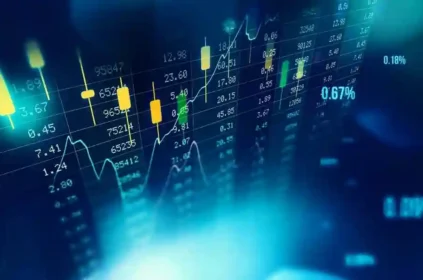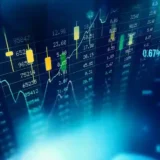In today’s interconnected world, social media platforms have become more than just avenues for social interaction; they are also rich sources of real-time information and market sentiment. Leveraging social media analysis for timely forex robot signals has emerged as a powerful strategy for staying ahead of market trends and making informed trading decisions. By analyzing social media data, forex robots can capture market sentiment, identify potential trading opportunities, and generate timely signals to capitalize on emerging trends. In this article, we explore the concept of leveraging social media analysis for forex robot signals, examining its principles, applications, and advantages in the dynamic forex market.
Understanding Social Media Analysis:
Social media analysis involves the collection, processing, and analysis of data from various social media platforms to extract insights and patterns related to specific topics, trends, or events. Social media data encompass a wide range of sources, including tweets, posts, comments, likes, and shares, across platforms such as Twitter, Facebook, LinkedIn, and Reddit. By analyzing social media data, traders can gain valuable insights into market sentiment, investor behavior, and emerging trends that may impact financial markets.
Key principles of social media analysis include:
- Sentiment Analysis: Sentiment analysis involves analyzing social media data to determine the overall sentiment or attitude expressed towards a particular topic, product, or event. By classifying social media posts as positive, negative, or neutral, sentiment analysis can gauge market sentiment and identify trends or patterns that may influence market movements.
- Volume Analysis: Volume analysis involves tracking the volume of social media mentions, posts, or interactions related to specific topics or keywords over time. By monitoring changes in social media activity, traders can identify spikes or trends in interest and assess their potential impact on market sentiment and price movements.
- Influencer Analysis: Influencer analysis involves identifying influential individuals or accounts on social media platforms who have a significant impact on market sentiment and investor behavior. By tracking the activity and opinions of key influencers, traders can gain insights into emerging trends, market sentiment, and potential trading opportunities.
- Event Detection: Event detection involves identifying significant events or news events from social media data that may impact financial markets. By monitoring social media platforms for mentions of specific keywords, events, or topics, traders can identify emerging trends, news events, or market-moving developments in real-time.
Applications of Social Media Analysis in Forex Trading:
Social media analysis has several applications in forex trading, including:
- Market Sentiment Analysis: Social media analysis can gauge market sentiment by analyzing the overall sentiment expressed in social media posts, tweets, or comments related to specific currency pairs, economic indicators, or geopolitical events. By monitoring changes in market sentiment, traders can anticipate shifts in market direction and adjust their trading strategies accordingly.
- Event Detection: Social media analysis can detect significant events or news events that may impact currency markets, such as economic releases, geopolitical developments, or central bank announcements. By identifying relevant events from social media data, traders can stay informed about market-moving developments and adjust their trading strategies in response.
- Trend Identification: Social media analysis can identify emerging trends or patterns in social media data that may signal potential trading opportunities. By analyzing the volume and sentiment of social media mentions related to specific currency pairs or economic indicators, traders can identify trends or patterns that may precede price movements in the forex market.
- Risk Management: Social media analysis can help assess and manage risk by providing insights into market sentiment, investor behavior, and emerging trends. By monitoring changes in social media activity and sentiment, traders can identify potential risks or opportunities and adjust their risk management strategies accordingly.
Advantages of Leveraging Social Media Analysis for Forex Robot Signals:
Leveraging social media analysis for forex robot signals offers several advantages:
- Timeliness: Social media analysis provides real-time insights into market sentiment and emerging trends, allowing forex robots to generate timely signals and capitalize on emerging opportunities.
- Broad Coverage: Social media analysis encompasses a wide range of sources and platforms, providing comprehensive coverage of market sentiment, investor behavior, and emerging trends across different regions and industries.
- Predictive Power: Social media analysis can provide predictive insights into market sentiment and price movements, allowing forex robots to anticipate shifts in market direction and adjust trading strategies proactively.
- Enhanced Decision-Making: Social media analysis can enhance decision-making by providing additional sources of information and insights that complement traditional market analysis techniques. By incorporating social media data into trading strategies, forex robots can make more informed and data-driven decisions.
Challenges of Leveraging Social Media Analysis for Forex Robot Signals:
Despite its advantages, leveraging social media analysis for forex robot signals poses several challenges:
- Data Quality: Social media data may be noisy, unstructured, and subject to biases, which can affect the accuracy and reliability of analysis results. Traders need to carefully preprocess and filter social media data to ensure data quality and reliability.
- Sentiment Analysis Accuracy: Sentiment analysis algorithms may not always accurately capture the nuanced sentiment expressed in social media posts, tweets, or comments, leading to potential inaccuracies or misinterpretations in sentiment analysis results.
- Event Detection Reliability: Event detection algorithms may not always accurately detect significant events or news events from social media data, leading to potential missed opportunities or false signals in event-based trading strategies.
- Influencer Identification: Identifying influential individuals or accounts on social media platforms can be challenging, as influence may vary across different topics, regions, or industries. Traders need to use robust algorithms and techniques to identify relevant influencers and track their activity effectively.
Conclusion:
In conclusion, leveraging social media analysis for forex robot signals offers a valuable tool for gaining insights into market sentiment, identifying emerging trends, and making informed trading decisions. By analyzing social media data, forex robots can capture real-time market sentiment, detect significant events, and generate timely signals to capitalize on market opportunities. While social media analysis presents challenges such as data quality, sentiment analysis accuracy, event detection reliability, and influencer identification, the advantages of timeliness, broad coverage, predictive power, and enhanced decision-making make it a valuable addition to forex trading strategies. As traders continue to seek innovative approaches to forex trading, leveraging social media analysis for forex robot signals will remain a key technique for staying ahead of market trends and maximizing trading performance in the dynamic and competitive forex market.










